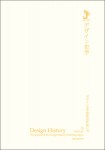目次
巻頭
デザイン史学研究会について
編集方針について
編集委員会と編集諮問委員会
論文
1990年代以降の中国雲南省麗江における納西族東巴文字の政治的経済的変容/高茜
近代日本における建築と家具設計の関係??木檜恕一の場合/サラ・ティズリー
書評
川畑直道『原弘と「僕達の新活版術」??活字・写真・印刷の1930年代』/評者 井口壽乃
アリソン・クラーク『タッパーウェア??1950年代アメリカにおけるプラスチックの約束』/評者 面矢慎介
ノイズ
新しい対話の形/キュー・リーメイ・ジュリア
投稿要項
会則
執筆者について
–
バックナンバーの購入方法について
巻頭
デザイン史学研究会について
編集方針について
編集委員会と編集諮問委員会
論文1
1990年代以降の中国雲南省麗江における納西族東巴文字の政治的経済的変容
高茜(ガオ・チェン)
キーワード
中国雲南省、震江納西族、東巴文字、改革・開放、観光政策、文化保護
概要
1978年の改革・開放以来の中国にあっては、経済発展を目指すさまざまな政策が展開されると同時に、宗教を含む文化に関する制限もある程度解かれることになった。その一環として、1990年代以降、納西族が最も多く居住している雲南省麗江において、3つの「世界遺産」(古城、自然、東巴文字で描かれた東巴経典)が順次認定され、それに伴って、東巴文字は麗江の観光的発展とかかわりつつ、劇的な変化を遂げることになった。
本研究は、2001年から2003年のあいだの計4回にわたる現地調査をもとにして、1990年代以降の麗江納西族の東巴文字の変容過程を政治的、経済的、文化的文脈に照らして明らかにしようとするものである。
調査の結果、宗教文字としてすでにほぼ衰退していた東巴文字が、この時期、主として観光政策と観光業の発展に伴う新たな社会的基盤を得て、今日的に復活していく様子が認められた。しかしそれは、本来の宗教的、文化的意味と役割を喪失した文字が商業的に利用されていく新たな姿であり、さらに一部には文字そのものが異形化されていく、ある観点からすれば異常な姿をさらけ出すものでもあった。本論文では、そうした問題に対して言及され、分析が施されている。
論文2
近代日本における建築と家具設計の関係——木檜恕一の場合
サラ・ティズリー
キーワード
木檜恕一、大正時代日本、木材工芸、家具と建築の関係、住宅改善、建築学会
概要
本論文は、デザイナーおよび教育者として戦前日本のデザイン界に大きく貢献した家具デザイナー木檜恕一 (1882-1943) が住宅建築改良の提案を通して、建築業界とどのように付き合っていたのかということを明確にする試みである。明治末期に建築の教育を受けてから師匠の意思で家具の研究に専任した木檜は、1910年代は日本における洋風家具生産の改善のために力を尽くしたが、1920年前後に生活家改善運動に出会ってからは活動が一般国民の住居環境の改善へとまで広がった。その後、洋風な空間・モノ・生活様式を導入して、従来の生活と融合させることが「近代日本」という新しい社会の形成条件であると考えた木檜は生産者側・消費者側をこだわらず、住居環境と家具の改造を唱え続けた。生活改善同盟会会員であった木檜にとって、建築や室内装飾や家具意匠などは新しい生活様式を提供する手段以上に新しいアイデンティティの鍵であった。しかし、このように住宅建築について語り続けた木檜は本業が家具デザイナーと見られたため、彼の提案は一般社会やデザイン業界の間で広がっていても、 建築業界での彼の発言は家具製作の改良について限られていた。
本論文は、以上の状況を背景に、木檜の活動と言葉において展開される家具と建築の社会的役割に対する概念を分析してから、当時の日本の建築界における木檜の位置づけについて考察する。また、男性建築家やデザイナー以外に、当時は制度上、建築家やデザイナーにはなれなかった主婦や女学生を対象に住環境の総合制作の必要性を主張した木檜の仕事にみえる家具、建築とジェンダーの関係についても言及する。
書評
川畑直道『原弘と「僕達の新活版術」??活字・写真・印刷の1930年代』/評者 井口壽乃
アリソン・クラーク『タッパーウェア??1950年代アメリカにおけるプラスチックの約束』/評者 面矢慎介
ノイズ
新しい対話の形/キュー・リーメイ・ジュリア
投稿要項
会則
執筆者について
Contents
Editorial
About the DHWJ
Editorial Policy
Editorial Board and Editorial Advisory Board
Articles
A Political and Economic Change in Naxi People’s Tompa Characters in Lijiang, Yunnan Prefecture in China since the 1990s / Gao Qian
Architecture and Furniture Design in Modern Japan: The Case of Kogure Joichi / Sarah Teasley
Book Reviews
Kawahata Naomichi: Hara Hiromu to Bokutachi no shin kappan-jutsu (Hara Hiromu and Our New Printing Techniques) / reviewed by Iguchi Toshino
Alison J. Clarke, Tupperware: The Promise of Plastic in 1950s America / reviewed by Omoya Shinsuke
Noise
Metamorphosis of the Design Dialogue / Leimei Julia Chiu
Guidelines for Submission of Manuscripts
Constitution and Bylaws
Notes on Contributors
–
How to Order Your Back Issues
Editorial
About the DHWJ
Editorial Policy
Editorial Board and Editorial Advisory Board
Article 1
A Political and Economic Change in Naxi People’s Tompa Characters Lijiang, Yunnan Prefecture in China since the 1990s
Gao Qian
Keywords
Tompa Characters, Reform and Opening-up, Tourist Policy, Cultural Protection, Naxi People, Lijian, China
Abstract
Since embarking on policies of reform and opening-up in 1978, China has gradually lifted restrictions on culture and religions and actively developed various economic policies. As part of this process, the Tompa scriptures written in Tompa characters were successfully registered as a UNESCO World Heritage in 2003.
Tompa characters were originally pictographs used by Tompas, the priests of the Tompa religion, for writing their beliefs in the scriptures. The Tompa religion, which emerged from the ancient culture of the Naxi people of northwest China, mainly at Lijiang, culminated in an ascension to power in the Eleventh Century, but then declined and was near-dead by the time of economic reform and opening-up after 1978.
In the mid-1990s, the Lijiang local government decided to use Tompa characters as a means of developing tourism and trade in the area. The policy has dramatically given Tompa characters a great cultural impact. This article focuses on how the meanings and roles of Tompa characters have changed in political, economic and cultural context up the present day.
Article 2
Architecture and Furniture Design in Modern Japan: The Case of Kogure Joichi
Sarah Teasley
Keywords
Kogure Joichi, Taisho Japan, Woodworking, Furniture and Architecture, Housing Improvement, Architectural Institute, Publishing Culture
Abstract
Japanese furniture designer Kogure Joichi’s comprehensive suggestions for the architecture, interiors and furnishings of the modern urban middle-class home subsumed architectural and design practice into the ideological creation of a total living environment. Trained as an architect, Kogure helped pioneer Japan’s western-style furniture industry in the 1910s, before broadening his scope to include housing design and lifestyle reform around 1920. Kogure used all available media to disseminate the message that improved domestic space was the key to modern life, where ‘improvement’ meant the replacement of ‘traditional’ tatami with ‘modern’ chairs and hard floors in a new house or renovated vernacular dwelling. Thus, Kogure valued furniture and dwelling spaces as tools enabling a new way of living and being. However, as a woodworking specialist, his activities in architectural circles were confined to suggestions for furniture refom.
This paper interprets Kogure’s writings and designs against architectural culture and vernacular domestic space in 1910s and 1920s Japan. It considers Kogure’s use of furniture in the daily life improvement movement, and proposes that while his design practice encompassed architecture, interior design and furniture design, his confinement to the domestic sphere reflects a division between architects, who claimed public buildings as the most visible stage for national modernity while also publishing house designs, and designers and social reformers, who concentrated on the home. Finally, it examines Kogure’s understanding of the necessity of involve women – not usually included in architectural and design discourse – in the creation of the home as a comprehensive living environment, and analyzes his use of mass media to this end.
Book Reviews
Kawahata Naomichi: Hara Hiromu to Bokutachi no shin kappan-jutsu (Hara Hiromu and Our New Printing Techniques) / reviewed by Iguchi Toshino
Alison J. Clarke, Tupperware: The Promise of Plastic in 1950s America / reviewed by Omoya Shinsuke
Noise
Metamorphosis of the Design Dialogue / Leimei Julia Chiu
